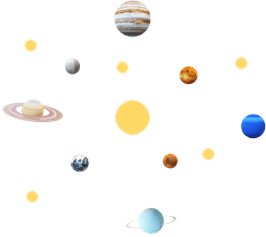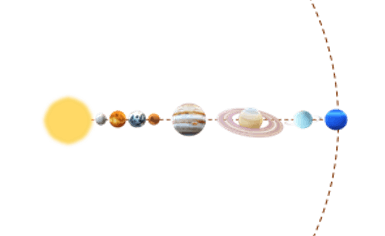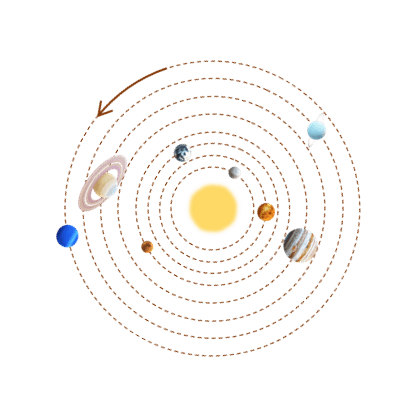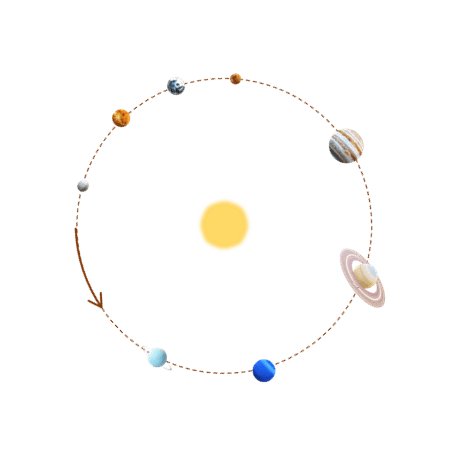The solar system
I can describe the main features of the solar system.
The solar system
I can describe the main features of the solar system.
These resources will be removed by end of Summer Term 2025.
Lesson details
Key learning points
- The solar system includes the Sun, eight planets, dwarf planets and bands of smaller rocks.
- The planets, dwarf planets and bands of smaller rocks all move the same way around the Sun as they orbit it.
- Most planets in the solar system are orbited by one or more moons.
- Each moon orbits a planet because of the gravitational attraction between it and the planet.
- Each planet in the solar system orbits the Sun because of the gravitational attraction between it and the Sun.
Keywords
Solar system - the Sun and the collection of objects in orbit around it
Planet - a very large, spherical object in orbit around a star that has cleared the path of its orbit of other objects
Dwarf planet - a large object in orbit around a star that has not cleared the path of its orbit of other objects
Moon - a natural object in orbit around a planet
Common misconception
Gravity only acts close to the surface of a planet.
Provide examples of motions caused by gravitational forces acting over huge distances of space, such as the orbits of planets.
To help you plan your year 11 physics lesson on: The solar system, download all teaching resources for free and adapt to suit your pupils' needs...
To help you plan your year 11 physics lesson on: The solar system, download all teaching resources for free and adapt to suit your pupils' needs.
The starter quiz will activate and check your pupils' prior knowledge, with versions available both with and without answers in PDF format.
We use learning cycles to break down learning into key concepts or ideas linked to the learning outcome. Each learning cycle features explanations with checks for understanding and practice tasks with feedback. All of this is found in our slide decks, ready for you to download and edit. The practice tasks are also available as printable worksheets and some lessons have additional materials with extra material you might need for teaching the lesson.
The assessment exit quiz will test your pupils' understanding of the key learning points.
Our video is a tool for planning, showing how other teachers might teach the lesson, offering helpful tips, modelled explanations and inspiration for your own delivery in the classroom. Plus, you can set it as homework or revision for pupils and keep their learning on track by sharing an online pupil version of this lesson.
Explore more key stage 4 physics lessons from the Gravity in space unit, dive into the full secondary physics curriculum, or learn more about lesson planning.

Licence
Starter quiz
6 Questions






